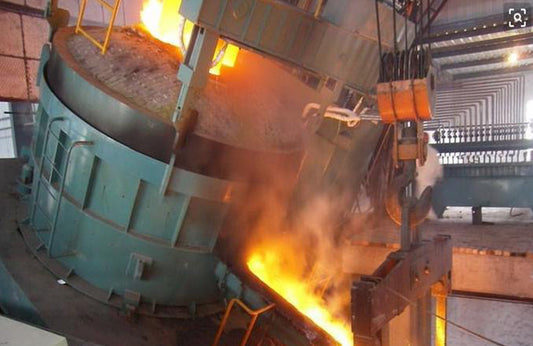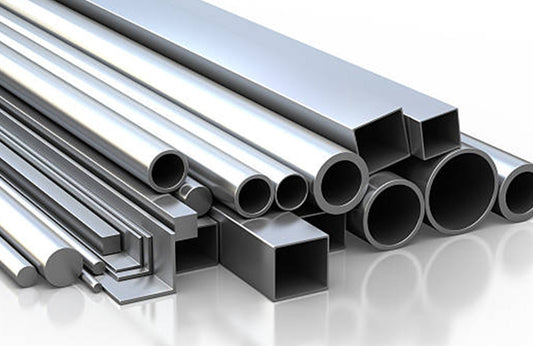
18/8 Stainless Steel: Properties and Applications
Introduction
18/8 stainless steel gets its name from its composition—18%-20% chromium and 8%-10.5% nickel. This ratio is key to its excellent performance. The most common national standard is 304 stainless steel (GB/T 20878-2007), corresponding to ASTM 304 and SUS 304. It can be processed into sheet, pipe, and wire, and is widely used in kitchenware, food equipment, architectural decoration, and home appliances. Among them, 18/8 stainless steel sheet is particularly valuable due to its flexible processing and wide range of applications.
I. 18/8 Stainless Steel: Core Characteristics
18/8 stainless steel is not a single type of stainless steel, but rather a general term for austenitic stainless steel with a chromium (Cr) content of 18%-20% and a nickel (Ni) content of 8%-10.5%. The most common national standard is 304 stainless steel (GB/T 20878-2007), corresponding to ASTM 304 and SUS 304. Its core advantage stems from its precise compositional ratios, resulting in superior performance across multiple dimensions.
1. Material Composition: The Stability Code of the Austenitic Structure
-
The compositional design of 18/8 stainless steel is the foundation of its performance.
-
Chromium is the core of corrosion resistance. When the chromium content reaches 12% or more, a dense chromium oxide (Cr₂O₃) passive film forms on the surface. This film prevents corrosive media such as oxygen and moisture from contacting the metal underneath. Even if the surface is scratched, the passive film can quickly self-repair.
-
Nickel acts as a structural stabilizer, fixing the crystal structure into a face-centered cubic austenite structure. This gives the material excellent plasticity and toughness at room temperature and prevents brittle transitions, while further enhancing corrosion resistance.
-
Small amounts of manganese (Mn ≤ 2%) and silicon (Si ≤ 1%) are added to optimize smelting properties.
-
Carbon content (C ≤ 0.08%) is strictly controlled to prevent chromium carbide formation and intergranular corrosion.
2. Mechanical Properties: Strength and Plasticity
-
Room-temperature strength: Tensile strength (σb) ~515-655 MPa, yield strength (σ0.2) ~205 MPa.
-
Plasticity and toughness: Elongation (δ5) ≥ 40%, reduction of area (ψ) ≥ 60%. Impact toughness (αk) ≥ 160 J/cm² at room temperature; maintains toughness even at −196°C.
-
Hardness: Annealed Brinell hardness (HBW) ≤187; cold working can increase hardness (HBW 240-280) for wear resistance.
3. Chemical Corrosion Resistance
-
Neutral environments: Resistant to water, air, and weak alkaline solutions.
-
Weakly acidic environments: Resistant to organic acids, dilute sulfuric acid (≤10%), and dilute hydrochloric acid (≤5%).
-
Common pollutants: Some resistance to municipal sewage and neutral salts. Not suitable for highly corrosive environments (e.g., concentrated nitric acid, high-concentration chloride solutions).
4. Thermal and Electrical Properties
-
Thermal properties: Thermal conductivity ~16.3 W/(m·K) at 20°C; linear expansion coefficient ~17.2 ×10⁻⁶/°C at 20–100°C.
-
Electrical properties: Resistivity ~72 ×10⁻⁸ Ω·m at 20°C; poor conductivity.
II. 18/8 Stainless Steel Sheet: Processing, Performance, and Applications
18/8 stainless steel sheet is a flat product made from 18/8 stainless steel through rolling, annealing, and surface treatment. Thickness typically ranges from 0.3 mm to 10 mm (thicker than 10 mm is "thick stainless steel plate"). Widths and lengths can be customized. Its core value lies in its adaptability for decorative surfaces and complex structural components.
1. Processing
-
Rolling: Hot rolling (3–10 mm) for structural parts; cold rolling (0.3–3 mm) for precise surfaces.
-
Heat treatment: Solution treatment (1050–1100°C) dissolves carbides; annealing (800–900°C) restores plasticity.
-
Surface treatment: Brushing, polishing, passivation, coating (e.g., PTFE non-stick).
2. Core Performance Advantages
-
Formability: Cold-rolled sheets allow complex shapes via stamping, bending, and stretching.
-
Surface controllability: Various finishes (decorative, functional, anti-slip).
-
Easy splicing: Welding, riveting, bonding; passivation restores corrosion resistance.
-
Cost-effective: High rolling efficiency and utilization, suitable for large-scale applications.
3. Typical Applications
-
Food and catering: Kitchenware, conveyor belts, tank liners.
-
Home appliances: Washing machine drums, refrigerator panels, microwave liners.
-
Construction and decoration: Elevator panels, wall panels, balcony railings, rainwater pipes.
-
Medical and electronics: Device housings, electronic chassis.
III. 18/8 Stainless Steel Plate: Selection and Usage Considerations
-
Selection basis: Thickness, surface treatment, and performance requirements.
-
Avoid misuse: Do not use in high chloride or high-temperature (>600°C) environments.
-
Maintenance: Clean with neutral detergents; avoid strong acids/alkalis. Sand scratches and apply protective agents.
Conclusion
Thanks to its precise composition, 18/8 stainless steel balances corrosion resistance, mechanical properties, and processability. Its flexible forms and processing techniques extend its value across daily use, industrial production, and medical applications. With ongoing advances in processing technology, 18/8 stainless steel plate will continue to expand in applications.



